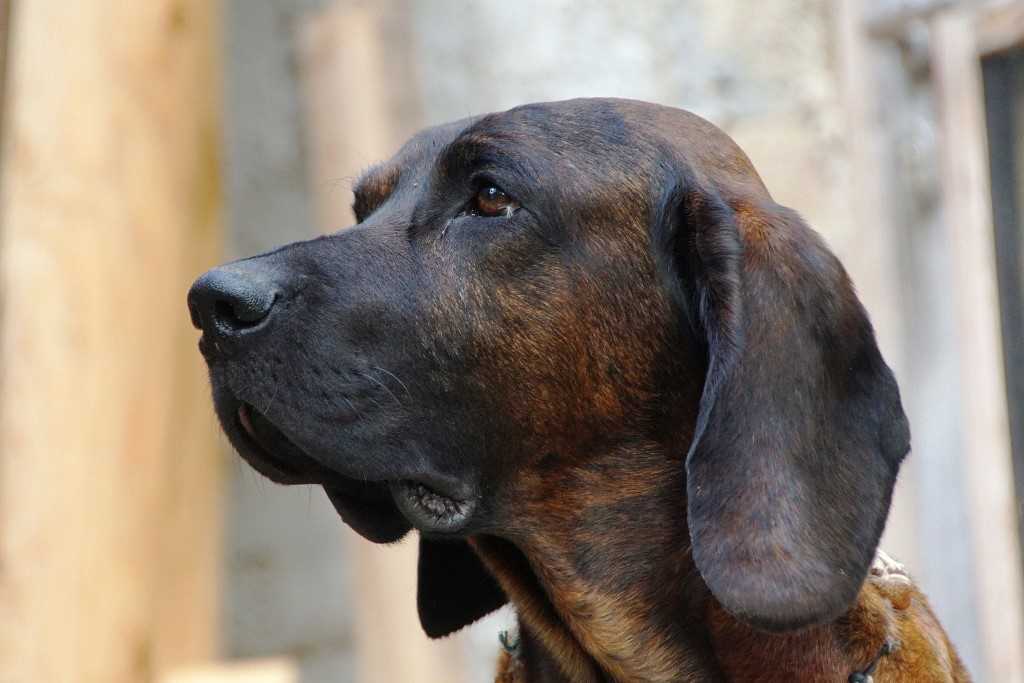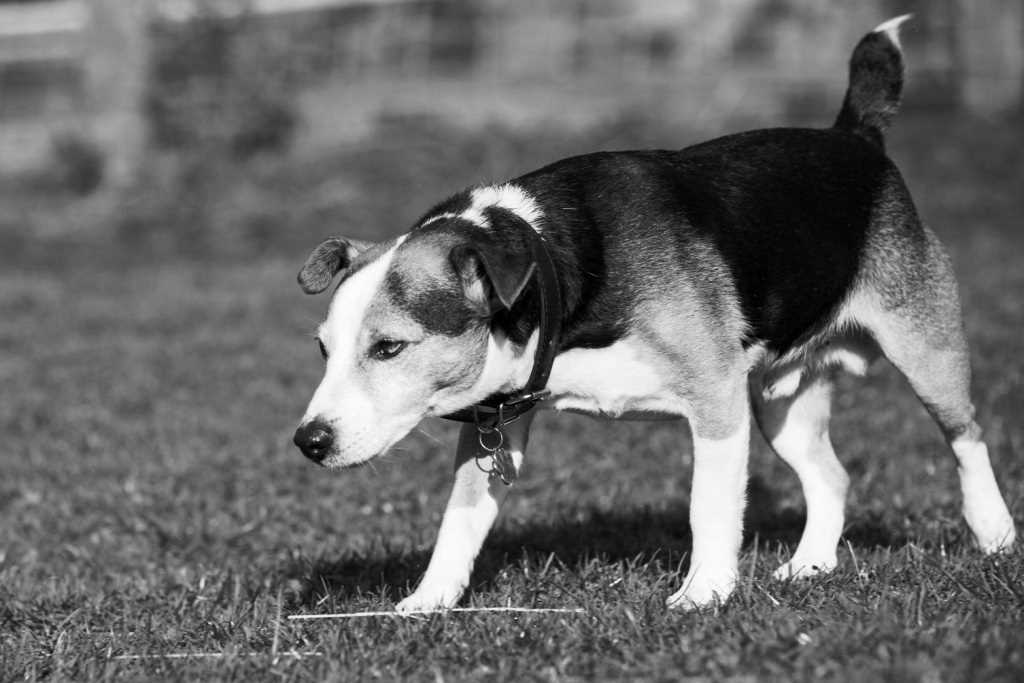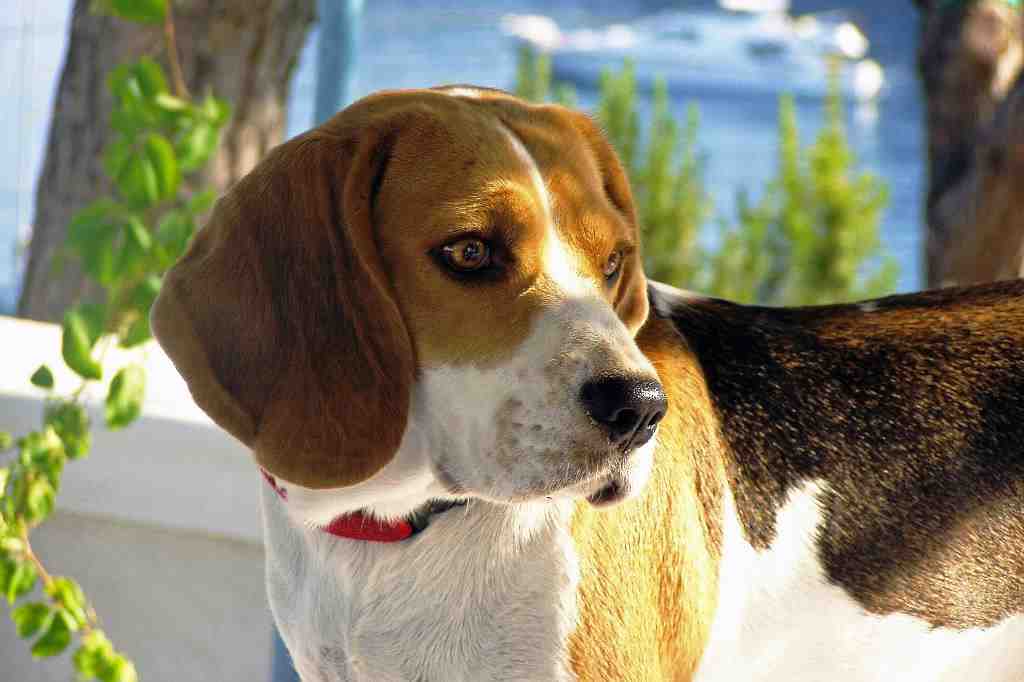The origin of the Haverscher schweisshund dog breed is in Germany, specifically in the region of Saxony. This breed seems to have been almost unchanged since the so-called ‘limers’ in the early Middle Ages, who were already considered excellent bloodhounds around 500 AD. When firearms appeared, big game hunting changed a lot, so a dog was needed to track down the wounded animal, and the Limerrier was the one that offered the best prerequisites for this purpose; it is from him that the breed we are talking about in this article, of bloodhound, was derived.
It was created by a gamekeeper from Hanover, hence the origin of its name. The Harz bloodhound and an ancient German bloodhound were used to create the present specimen. Its use is mainly specialised in blood trail searching, especially for deer, and it is capable of following a trail as old as days.
Character of the Haverscher schweisshund dog breed
This breed is primarily a hunting dog, with a determined, self-confident and hard-working character, and is highly valued for its endurance and concentration in maintaining the connection between the pack and the hunter. It hunts very well in moult.
It is therefore not suitable for flat living; it needs to be free to use its energy, in the meadows or in the woods. He needs the countryside and a house with a garden where he can spend many hours a day. In the family, however, it is very calm and good even with children, whom it adores and tends to defend them from everything.
With dogs, being a moulting dog, it socialises quietly and shares the same spaces. It can also coexist with cats, only as a puppy and if they have grown up together. With strangers it is rather wary, making it a good guard dog. It is quite easily trained as its desire is to please its master.
Due to its need for movement, it is not suitable for elderly or sedentary people; it must be able to give off its energy at least two or three times a day, otherwise it may have psychological and physical problems.
Appearance of the Haverscher schweisshund dog breed
It is a medium-sized dog, very robust and with the right proportions. The muscles are well emphasised; overall it is a powerful animal.
The height at the withers for a male is 50 to 55 centimetres for a weight of 30 to 40 kilograms; between male and female there is a marked difference in weight and height. The limbs are strong and perfectly flattened in relation to the horizontal plane, the musculature in the hind limbs is excellent. However, the limbs are never too high so as not to hinder tracking work with the nose on the ground.
The tail is long and little curved, high and strong; it tapers at the extremity.
The skull is broad, the head has the typical hound shape, with a full muzzle. The forehead has some wrinkles, the truffle is large and usually black. The ears are of medium length, attached high and wide, smooth. They are pendulous, adherent to the head, with the lower edge slightly rolled up. The eyes are dark, and deep; the gaze is lively, giving it a typical severe expression.
The coat of this hound is thick, dense and strong. It is short and even over the whole body, only behind the thighs it is slightly longer and double, while on the tail it is thick and hard. The colour ranges from light red to fawn, fading from light to dark shades with the exception of a few streaks.
Care and health of the Haverscher schweisshund dog breed
This breed is not predisposed to any particular diseases, indeed there is no known pathology; it rarely falls ill. Its average life expectancy is about 12 years. It does not tolerate either high or low temperatures, so it must stay indoors during winter nights and care must be taken during summer hunting trips.
As far as nutrition is concerned, it is a dog that tends to put on weight if it does not get enough exercise. It must follow a healthy, balanced diet and the quantities of food are important and must be respected according to the dog’s day and the energy it uses.
The care of the coat is very easy, just a couple of brushes during the week; hair losses are moderate, they only increase during the moulting period, twice a year, in spring and autumn.


